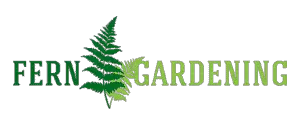Most ferns like moist soil and humid conditions. This has led to a misconception that all ferns can grow well in bog gardens, or the marshy conditions by ponds and streams. In fact, most fern species prefer the kind of conditions found in woodland – shady, and with a thick mulch of leaf litter or pine needles that keeps the surface soil damp, but not waterlogged.
The best ferns for very wet conditions are the Osmunda and Athyrium species, with the magnificent Royal fern and delicate Lady fern being two of the best. Several other ferns are also well adapted to boggy conditions, including the Marsh fern, Chain ferns and Crested buckler fern. For less wet sites there are lots of options, with Hard ferns, Ostrich ferns and Sensitive ferns being good choices. With the right fern in the right conditions, even the dampest of corners in the garden can be planted successfully.
If you are faced with an area of the garden that is prone to waterlogging, it can be sensible to work with the natural environment and develop the site into a bog garden. Ferns can be an ideal addition, but there are several factors to consider before choosing the right variety.
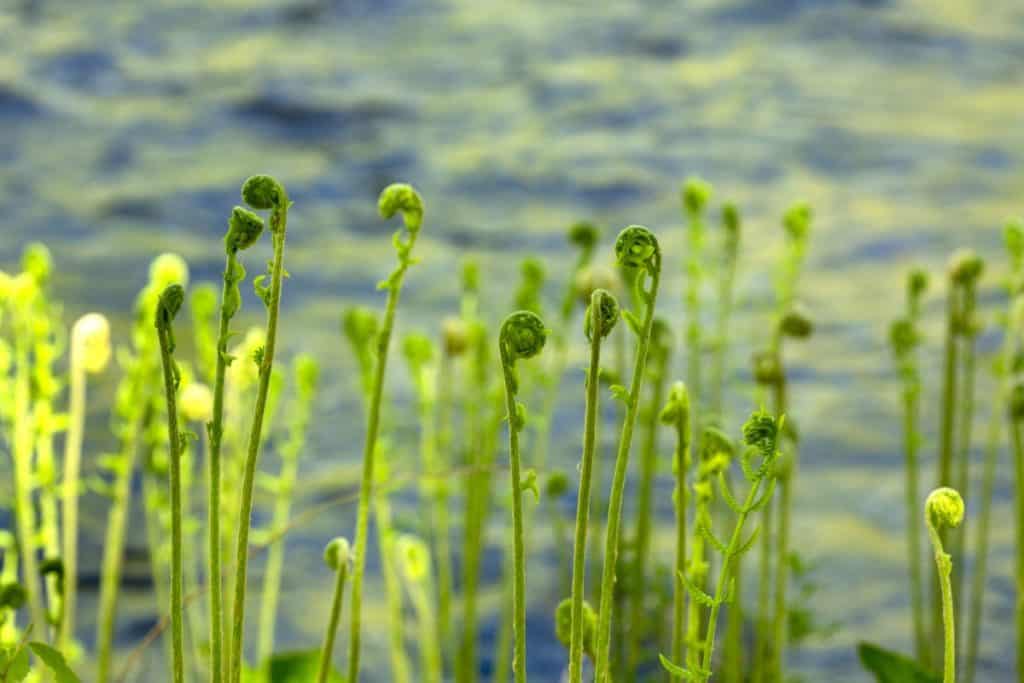
First, do you want a deciduous or evergreen fern? Many of the best ferns for boggy conditions are deciduous, and so will turn brown and lose their fronds over winter. This has its own charm, but there are also evergreen options available, if you want the benefit of foliage throughout the year.
The second important factor is that whatever fern you choose, the root stock should be planted so that the crown of the plant is not submerged in water. While the roots of many varieties will survive very wet ground, almost all garden ferns will die if the crown is below the water level. The only exceptions to this rule are the true aquatic ferns, such as Azolla filiculoides, which grow in ponds (and can be highly invasive).
Another risk faced by ferns in wet soil is freezing during deep winters. Again, the crown is the most vulnerable point for damage if the growing region of the fern is frozen. Packing the crown with straw, leaf litter, or coir will help protect against this risk.
With those general factors considered, let’s get to the list of ferns that grow best in wet soil.
Ferns for very wet ground
It make sense to start with the most aptly named option – the Marsh fern.

Marsh fern
- Thelypteris palustris
- Deciduous
- Partial or full shade
- Height: up to 1 m
- Soil: acid or neutral. Moist, tolerates poor drainage.
This is a vigorous fern that is well adapted to waterlogged ground. It spreads through creeping rhizomes, and will colonize boggy areas effectively, and can even dry the ground out over time.
Next up is the group of ferns most renowned for thriving in wet conditions: the Osmunda family of ferns. There are three main varieties that are commonly grown, the Royal fern, Cinnamon fern and Interrupted fern.
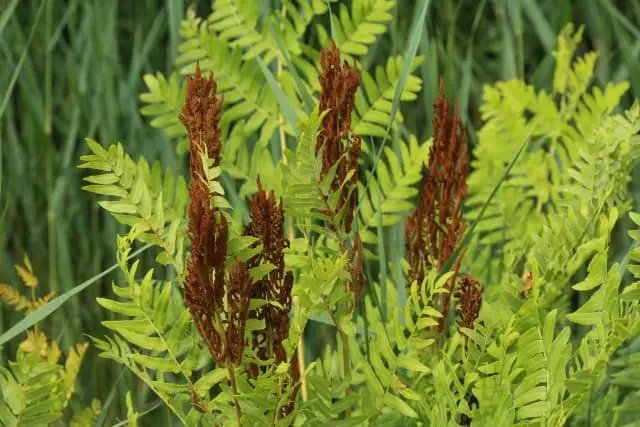
Royal fern
- Osmunda regalis
- Deciduous
- Full or partial shade, and full sun
- Height: up to 2.5 m
- Soil: acid, neutral or alkaline. Moist, poor drainage tolerated.

Cinnamon fern
- Osmunda cinnamomea
- Deciduous
- Prefers partial shade
- Height: up to 1.5 m
- Soil: acid. Moist, poor drainage tolerated.
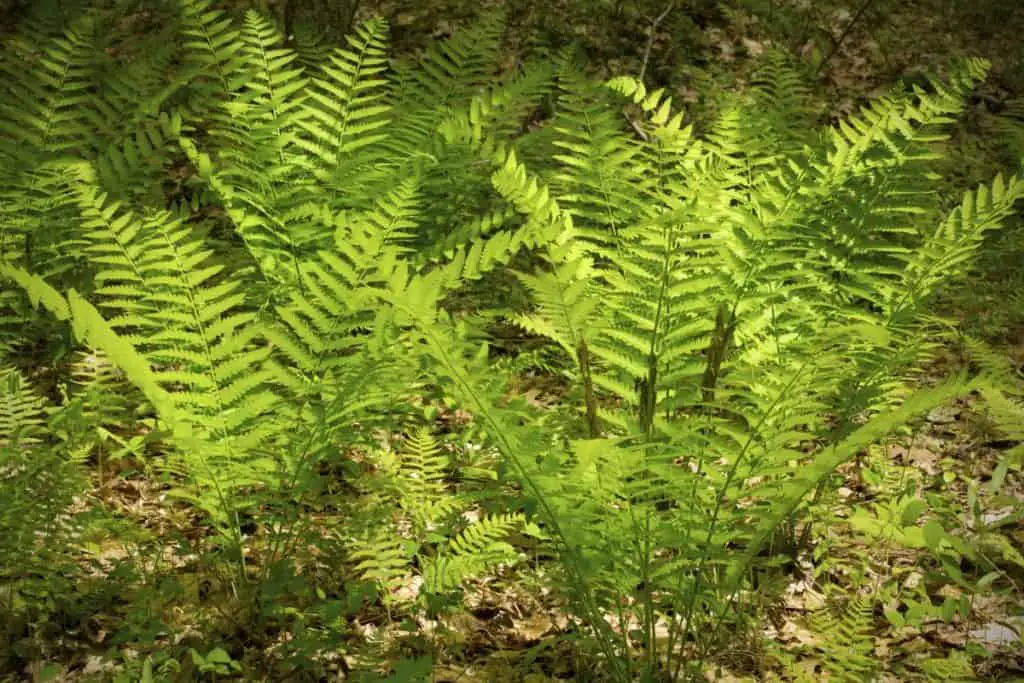
Interrupted fern
- Osmunda claytoniana
- Deciduous
- Prefers partial shade
- Height: up to 1 m
- Soil: acid. Moist, poor drainage tolerated.
These ferns prefer wet, acid soil, and can put on spectacular growth. The Royal fern in particular can reach more than 2 meters of height and spread, making it best suited to larger plots. All three varieties have distinctive fertile fronds that develop in the summer, which look a little like brown flowers. This curiosity adds a bit of extra visual interest.
The next family of ferns that are well suited to wet soil are the Athyrium family, or Lady ferns. There are a large number of varieties and cultivars from the Lady fern, most likely because growers value them for their dainty fronds, which are highly decorative.
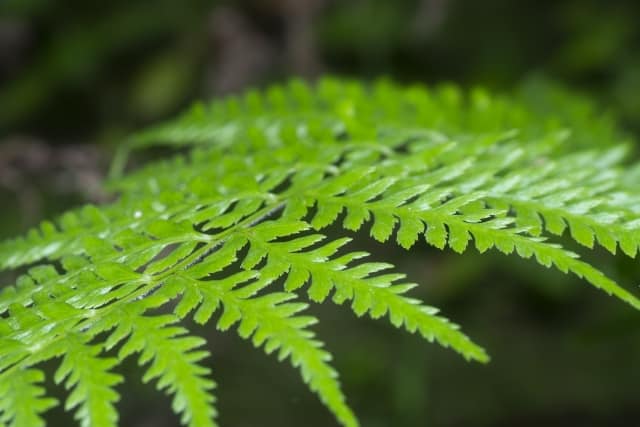
Lady fern
- Athyrium filix-femina
- Deciduous
- Prefers partial or full shade
- Height: up to 1 m
- Soil: acid or neutral. Moist, poor drainage tolerated.
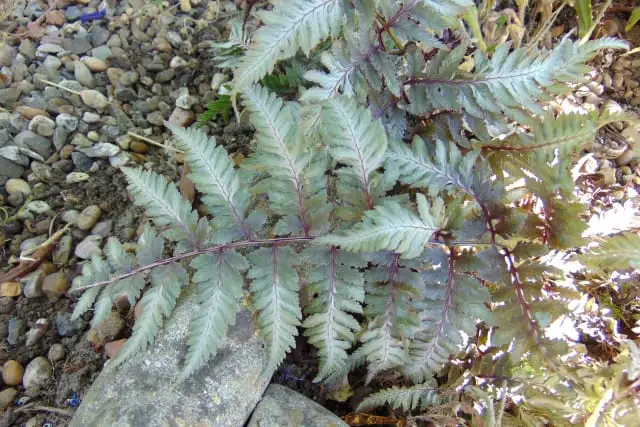
Japanese painted fern
- Athyrium niponicum
- Deciduous
- Prefers partial shade
- Height: up to 0.5 m
- Soil: acid, neutral or alkaline. Moist, well-drained.
These ferns are a good contrast to the robust bulkiness of the Osmunda ferns, providing more delicate and modest crowns and fronds. For smaller areas of the garden where space is an issue, they are a great choice.
A third family of ferns that grows well in marshy ground is the Woodwardia species, or Chain ferns. Although less common than Lady or Royal ferns, the Chain ferns are notable for the chain-like pattern of sori (the spore forming structures of the fern) on the surface of the frond’s pinnae.

Oriental chain fern
- Woodwardia orientalis
- Evergreen
- Prefers partial shade
- Height: up to 1.5 m
- Soil: acid or neutral. Moist, tolerates poor drainage.
There are several varieties of Chain fern available commercially, with markedly different appearance. Several varieties, such as the Giant chain fern (Woodwardia fimbriata), Oriental chain fern (Woodwardia Orientalis) and European chain fern (Woodwardia radicans) are evergreen.
A final fern worth mentioning for its moisture tolerance is the Crested Buckler fern (Dryopteris cristata), also known as the Narrow Swamp fern. Although not common in gardens, it thrives in wild fenland and marshland across the northern hemisphere.
A related variety of Dryopteris cristata (var. clintonianum), is common in the northern states of the US, and sometimes known as the Broad Swamp fern. As its name suggests, this also grows avidly in damp conditions.
Ferns for poorly draining soil
The list above covers ferns that are particularly well adapted to growing in waterlogged and persistently wet soil. Many more varieties will grow well in more moderate conditions, where soil is occasionally waterlogged or damp, but not flooded.
These conditions can be found around ponds or at the bottom of slopes, and can be suitable for a much wider range of popular ferns.
The Ostrich fern is a classic choice, with its spectacular shuttlecock of feathery fronds.
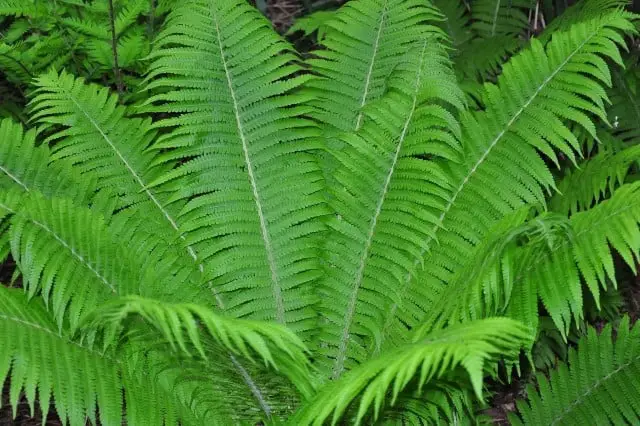
Ostrich fern
- Matteuccia struthiopteris
- Deciduous
- Full or partial shade
- Height: up to 1.5 m
- Soil: acid or neutral. Moist, well-drained.
It grows well, filling the available space, and providing a striking sea of green.
For a less showy and smaller fern, the Hard fern is an attractive option.
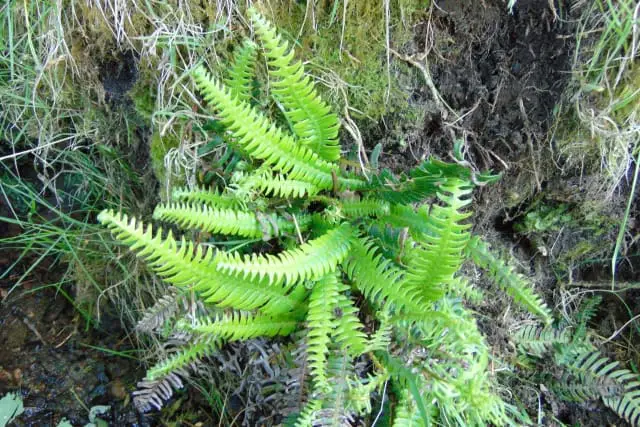
Hard fern
- Blechnum spicant
- Evergreen
- Prefers partial or full shade
- Height: up to 0.5 m
- Soil: acid or neutral. Moist, poor-drainage tolerated.
It has characteristic serrated fronds, and distinct fertile fronds that rise upwards over the crown. A more unusual and more eye-catching variety, and one of my personal favorites.
Another option for damp soil is the Sensitive fern.

Sensitive fern
- Onoclea sensibilis
- Deciduous
- Full or partial shade
- Height: up to 0.5 m
- Soil: acid or neutral. Moist, poor drainage tolerated.
This distinctive fern has unusual foliage, with fronds that have broad leaf-like pinnae. Like the Osmunda ferns, the Sensitive fern forms brown fertile fronds in summer, but gets its name from a tendency to die back suddenly after the first cold spell of fall.
It’s always worth experimenting
A final note on planting in wet ground is to be open to the idea of experimentation. Although many fern species are adapted to woodland conditions – rather than wetlands – many gardeners have great success with trying them out in boggy ground.
It is always worth a shot. Many species that prefer drier conditions will still grow in damp ground, and the only way to know for sure is to test them.
Ferns can be a great addition to bog gardens and other waterlogged ground. With the range of species available, it’s possible to plant any area, no matter how challenging, and make the impact that you want for garden design.
